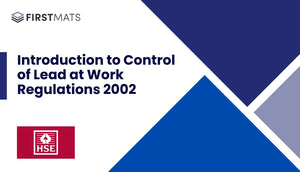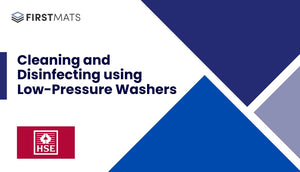Article Index:
Introduction
This article is a quick guide based on the Health and Safety Executive (HSE) document titled "Storing and Handling Ammonium Nitrate" (INDG230 Reprinted 11/04 C30). The original document provides in-depth information about the safe storage and handling procedures for ammonium nitrate. This guide condenses the key points into an easy-to-understand format.
What is Ammonium Nitrate?
Ammonium nitrate is primarily used as a fertiliser, available as prills (small spheres) or granules. It's not combustible in itself, but as an oxidising agent, it can assist other materials to burn, even without air. Under certain conditions like heat, confinement, or severe shock, it can explode. The risk of fire or explosion increases if ammonium nitrate is mixed with combustible or incompatible materials.
Key Precautions for Handling Ammonium Nitrate
- Ammonium nitrate should be stored in single-storey, well-ventilated buildings made from non-combustible materials like concrete, bricks, or steel.
- Storage areas should be kept clean and free from combustible materials and sources of contamination.
- Ammonium nitrate should not come into contact with materials like flammable liquids, powdered metals, acids, chlorates, nitrates, zinc, copper and its salts, oils, grease, gas cylinders and chemicals of incompatible or unknown properties.
- Storage areas should be secured to prevent unauthorised access. Regular inspection and maintenance of electrical equipment and fittings is essential.
- Smoking should be prohibited in all storage areas.
- Employees need to be trained and practised in the actions to take in a fire, including using portable fire-fighting equipment.
Specific Legislation for Large Quantities
Premises where ammonium nitrate is stored may be subject to certain regulations depending on the quantity stored. These regulations include the Control of Industrial Major Hazards Regulations 1984, as amended (CIMAH), and the Planning (Hazardous Substances) Regulations 1992 (PHS) or in Scotland, Town and Country Planning (Hazardous Substances) (Scotland) Regulations 1993.
Conclusion
Understanding the safe storage and handling of ammonium nitrate is crucial for preventing accidents and ensuring the safety of workers and others. This guide provides a simplified summary of the HSE's comprehensive document on the subject. However, it's important to refer to the original document for complete and detailed information. Always remember that health and safety compliance is not just about meeting legal requirements, but also about protecting people and the environment.







